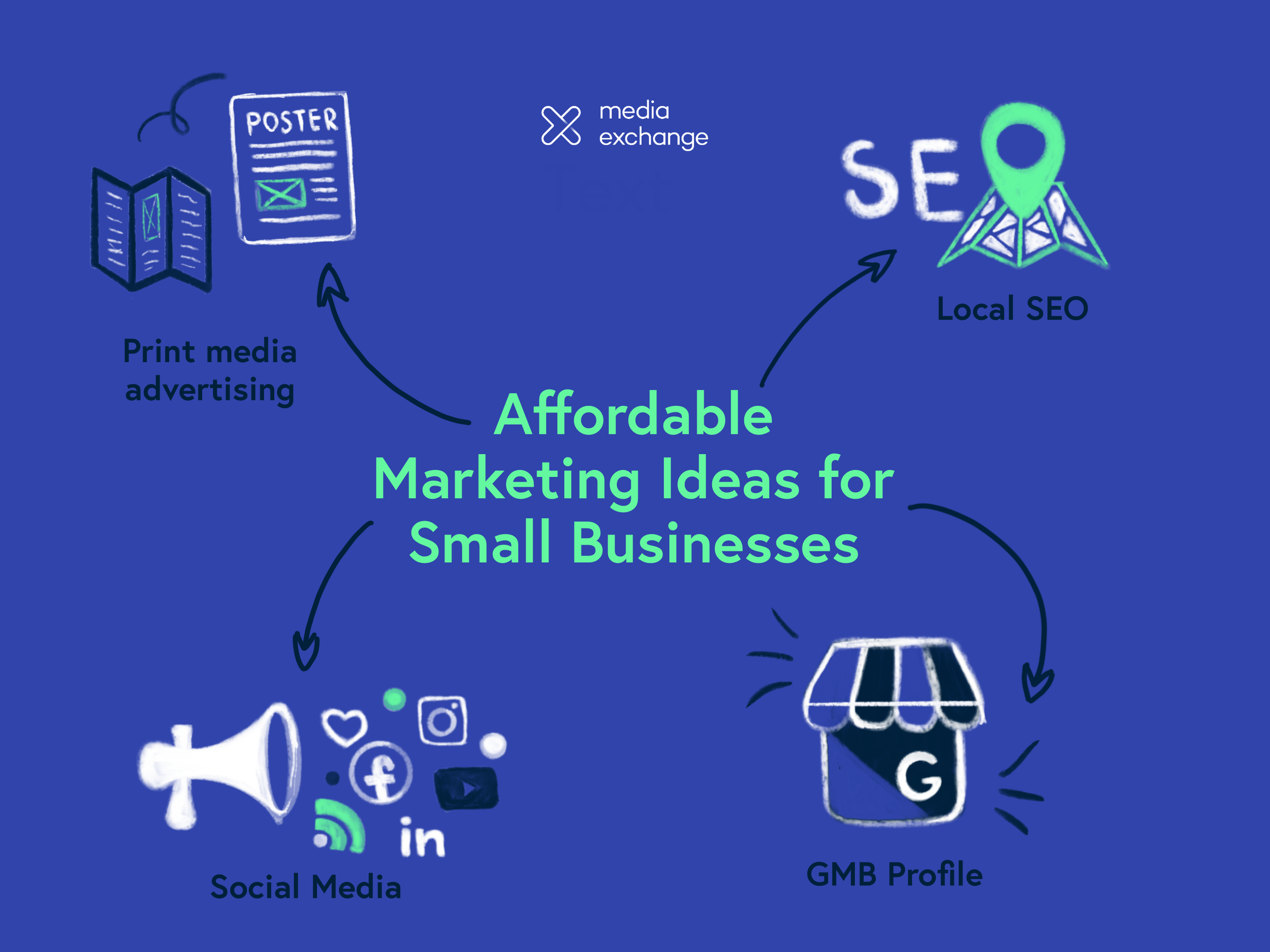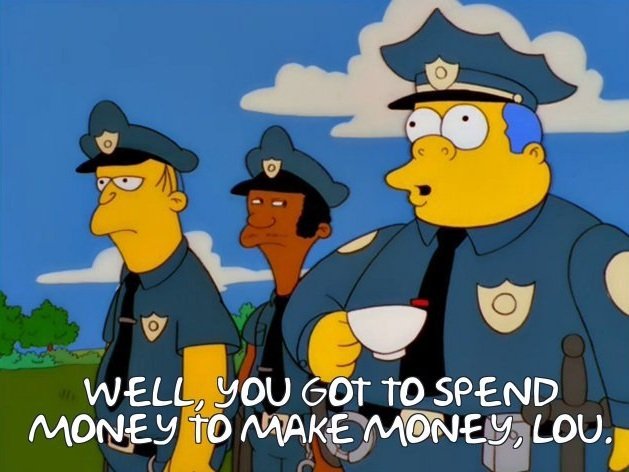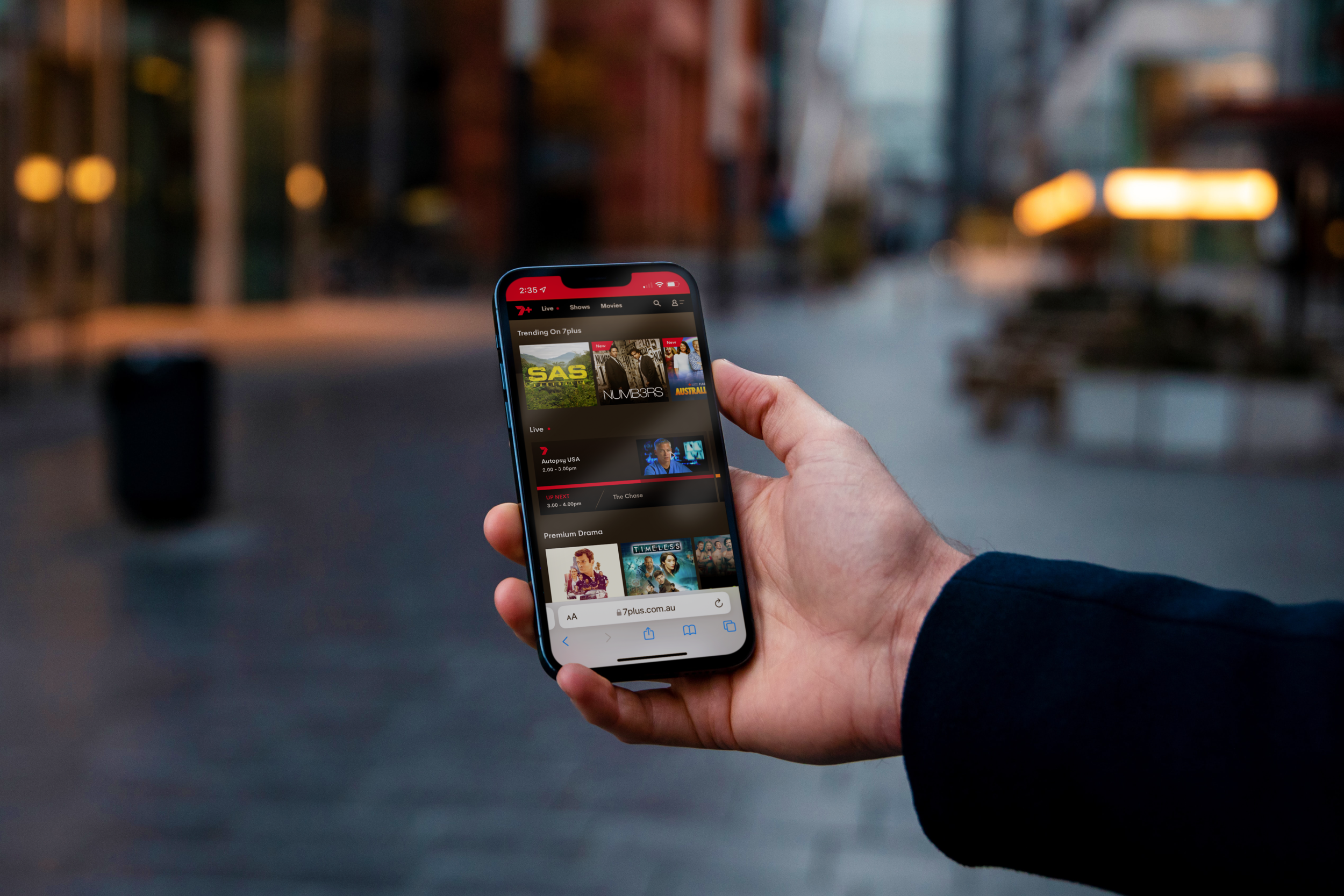Make a Splash and Save Some Cash: Affordable Marketing Ideas for Small Businesses
Premium marketing packages for small business, without a premium price tag.
Need marketing tips for your small business strategy?
Marketing solutions for small businesses can often be an early, hard-hitting cost that brands can’t quite justify. It can be hard to know how to begin getting your business out there in the early days, particularly when you’re trying to keep those finances balanced. Above all, you’ve got to have a clear marketing strategy, with well-defined goals and objectives.
(If you need help with that, check out our blog post on how to create an effective strategy. It’ll help, for real.)
But once you have your goals, how can you actually achieve them? Thankfully, there are plenty of low budget digital marketing strategies and advertising options which don’t require breaking the bank.
It’s important to note though, this isn’t cheap marketing — these are premium marketing tips that can be done at an affordable cost. Cheap marketing gets you no returns, no leads, wastes your money, drops your reputation, and destroys your enthusiasm. Keep an eye on our blog — we’ve got more coming on this.
Don’t let marketing get you down; follow our tips and it’ll build you up! Even at a lower cost, there are so many marketing opportunities where you can find success.
And today you’re really lucky because we’re sharing some of our marketing strategy services for free. Let’s dive in — here are our favourite affordable marketing techniques for small business owners.
Do the no-cost stuff…
Let’s start with the easy stuff.
When you’re in the early stages of business and marketing, you’re naturally thinking about business direction, costs, and how you can maximise your brand-building while spending the least. It’s a hard balance, and one that can play a big role in your overall success. But we also know you believe in your business idea, and we want to help you keep pushing it further. So our suggestion is to start by completing everything that won’t cost you a thing.
Google Business Profile
This is an absolute essential and forms part of Search Engine Optimisation (SEO). A Google Business Profile is the first step in an SEO strategy. Your Business Profile will show up on Google Search and in Maps, and provides a quick overview of the most important business information: contact details, location, opening hours, and more.
Doing local SEO doesn’t always require you to hire local SEO specialists; simply having a Business Profile is a good start for Small to Medium-sized Enterprises (SMEs). The best part: it doesn’t cost you to make one, and Google’s sophisticated algorithm will get you in front of potential consumers, enhancing your small business strategy overall.
A business profile is one of the most cost effective SME marketing tools. Having a listing always ensures you can be found in ‘zero-click searches’ — those searches where users find the answers they need on the search engine results page (SERP) without needing to click into a webpage. Zero-click searches account for over half of all Google searches; without a business profile, good luck being found.
To get the most out of your profile, make sure to verify your ownership of the business, which you can do through your business account on Google – you cannot receive any of the benefits of local SEO if you do not do this. If you can, try and connect your profile to Google Analytics, which tracks real-time data like website visitors, search terms and conversions.
Local SEO
Everything you write should be crafted for the local audience. The benefits of local SEO cannot be overlooked, especially in SME marketing. A local SEO campaign involves using local SEO keyword research for long-tail keywords — like ‘coffee shop South Melbourne’ for example — to help you appear more favourably in local searches. Local SEO services help you by getting you in front of the most important viewers: individuals physically close to you.
SEO is a long term game, and eventually you’ll probably need to partner with an SEO agency to cover the more technical bits. Beware of using overly cheap SEO agencies — they may take your money without producing any results. If you’re keen, we provide an affordable local SEO service, even in the early stages.
…but spend a little bit too
Chief Wiggum is right — you can’t really hope to grow your business without spending a little bit of cash. This doesn’t mean putting your business straight onto TV or throwing all your money into a fancy event. In the early days, invest in smaller and cheaper advertising formats, like brochures, posters or even a sign out the front of your business. Print media advertising might not sound as glamorous, but it’s still super effective. Even at a smaller scale, be creative with your ideas for local community advertising.
Partner with a brand design specialist and put some money into ensuring you have effective branding that you can take with you outside of your shop front too. The only thing more satisfying than seeing your name and brand on a new business card is handing that card out to potential connections. If you’ve got the money, you can also brand your vehicle with a custom car wrap to make sure your branding can be seen all around your local area.
Consider doing some giveaways or contests for your local customers too. Yeah, it might not be the best feeling to let some of your products and hard work walk out the door for free, but what you’re losing financially, you’re making up for in loyalty and customer appreciation.
Show off your knowledge
Content marketing is one of the most cost-effective elements in a marketing strategy, focused on writing and publishing content specifically for your target audience. This can be in the form of blogs, social media posts, videos, case studies and podcasts. By publishing informative and detailed content, you can establish your brand as a knowledge leader in your category, which gives a lot of long-term benefits: the more readers trust your brand’s information, the more likely they are to purchase your products and use your services.
Blogging in particular is an inexpensive way to showcase that knowledge. Try and write content that your audience will find particularly valuable: answer common questions, provide reviews and opinions, or even write brief guides and how-tos. Blogging is useful for your audience, but you might find that it’s a nice outlet for you too.
This content can also be transferred onto social media! In this day and age, most people are highly familiar with how to use different social platforms, but for a more detailed approach, here are our tips for social media marketing:
Know Your Voice: Establish a consistent tone that comes through in all of your captions and content, and tailor it to suit your category and audience. Create guidelines that your whole team can use, and be specific! Don’t just say you want to be ‘funny’ — decide if you want to be ‘satirical’, ‘cheeky’, ‘witty’ or something else.
Video Content: Try to post video as much as you can — it is recognised as the best-performing post type on most social channels, and gives you a uniquely dynamic opportunity to showcase your space, team and products.
Alternative Platforms: By all means, post on Facebook, Instagram and TikTok— your audience is almost certain to be there. But try and consider what other platforms your audience might frequent, like Twitter and Pinterest, and any niche platforms that may exist. Ask your customers what platforms they use most!
Think like a local
Starting out, the majority of customers are going to be people who are physically close to you, but that’s ok! Local communities often rally behind businesses that serve people well, and these people will form your most loyal audience for a long time, generating word-of-mouth recommendations and a regular stream of sales.
Try and get to know your regulars, host small local events in your space and appear at different community occasions. This is the most effective form of local SEO, and can also get you coverage from local media like newspapers and radio. While their audiences are small, they’re also likely to be the most invested people — the ones you want.
Look to the present and future
It can be tempting to continually look forwards, and to what the next move is. But don’t neglect your early audience: keep them loyal and converting. Try to add people to an email list and send them product updates, and maybe a little discount here and there too. Keep them updated with where your business is at; the closer they feel to your brand, the more loyal they’ll be.
Another big thing is to ask for referrals. Offer your customers a small reward or discount for generating new customers. Keep pointing people towards your socials as well, progressively building a following that you can leverage as you grow bigger.
Don’t be shy
You’ve put so much work into establishing your business and getting your brand in front of people — don’t go quiet now! Put effort into connecting with other businesses and your followers; apply for business awards in your category; develop a quick pitch you can deliver at a moment’s notice!
It’s important to appreciate the steps as you take them, but don’t forget to stay bold too.
Adapt as you grow
If you follow these tips and put effort into your marketing, eventually you’re going to outgrow some things and be able to pursue bigger marketing ideas. Your advertising strategies and marketing activities will need to evolve to suit a growing audience and match your new offering.
Unsure how to begin or where to go next? Our SME marketing team will help guide you on the best strategy to make you a successful business. We’re your local SEO company; we’re experts on social media for small business; we create tailored marketing packages for small business owners.
But above all, we’re better together.









